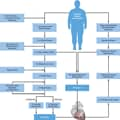Abstract and Introduction
Abstract
Many unique clinical challenges accompany the diagnosis and treatment of cardiovascular disease (CVD) in people living with overweight/obesity. Similarly, physicians encounter numerous complicating factors when managing obesity among people with CVD. Diagnostic accuracy in CVD medicine can be hampered by the presence of obesity, and pharmacological treatments or cardiac procedures require careful adjustment to optimize efficacy. The obesity paradox concept remains a source of confusion within the clinical community that may cause important risk factors to go unaddressed, and body mass index is a misleading measure that cannot account for body composition (eg, lean mass). Lifestyle modifications that support weight loss require long-term commitment, but cardiac rehabilitation programs represent a potential opportunity for structured interventions, and bariatric surgery may reduce CVD risk factors in obesity and CVD. This review examines the key issues and considerations for physicians involved in the management of concurrent obesity and CVD.
Introduction
Physicians face a multitude of clinical challenges when managing cardiovascular disease (CVD) in people with overweight/obesity, from diagnosis through to long-term treatment, because of the complex, multifaceted, and progressive nature of obesity and its impact on CVD outcomes (Figure 1).[1,2] Obesity is a heterogenous chronic condition affecting many people seen in the cardiology department, and although the World Health Organization defines the severity of obesity according to body mass index (BMI), a range of anthropometric measures that more accurately capture central adiposity (eg, waist-hip ratio, waist circumference) may provide better means of assessing the associated CVD risk.[3–13] Overweight, obesity, and severe class III or (previously called) morbid obesity are typically described as having a BMI of 25–29.9, ≥30, and ≥40 kg/m2, respectively, for Caucasian individuals, whereas lower thresholds exist for Asian populations.[8,14] Direct and indirect obesity-related mechanisms raise CVD risk via multiple pathways involving structural, functional, humoral, and hemodynamic alterations associated with the onset of cardiometabolic disease and complications associated with fat mass.[1,13]
Figure 1.
Obesity and Cardiovascular Disease: Proposed Pathophysiology of Obesity Cardiomyopathy
This diagram shows the central hemodynamic alterations that result from excessive adipose accumulation in severely obese patients and their subsequent effects on cardiac morphology and ventricular function. Left ventricular (LV) hypertrophy in severe obesity may be eccentric or concentric. Factors influencing LV remodeling and geometry include severity and duration of obesity; duration and severity of adverse LV loading conditions (particularly hypertension); and, possibly, neurohormonal and metabolic abnormalities such as increased sympathetic nervous system tone, activation of the renin-angiotensin-aldosterone system, insulin resistance with hyperinsulinemia, leptin resistance with hyperleptinemia, adiponectin deficiency, lipotoxicity, and lipoapoptosis. These alterations may contribute to the development of LV failure. LV failure, facilitated by pulmonary arterial hypertension from sleep apnea/obesity hypoventilation, may subsequently lead to right ventricular (RV) failure. Figure provided with kind permission from Lavie et al.2 LA = left atrial.
People with CVD and overweight/obesity often need support to understand and address their level of CVD risk, and a long-term multidisciplinary approach may be required to achieve and maintain a healthier body weight. This narrative review explores the unique clinical challenges relating to the management of CVD in the setting of obesity as well as the key issues to consider when addressing obesity among people living with CVD. The Central Illustration presents an overview of the reciprocal clinical issues associated with the concurrent management of CVD and obesity, and this review focuses on patient-centric and evidence-based approaches to care for the improvement of treatment outcomes and quality of life.
Central Illustration.
Clinical Challenges in People With Obesity and CVD
The direction of the arrows represents the causal relationship. CVD = cardiovascular disease; DOAC = direct oral anticoagulants; HTN = hypertension; LMWH = low molecular weight heparin; MACE = major adverse cardiovascular events; PCI = percutaneous intervention; UFH = unfractionated heparin.
J Am Coll Cardiol. 2023;81(5):490-504. © 2023 American College of Cardiology Foundation





